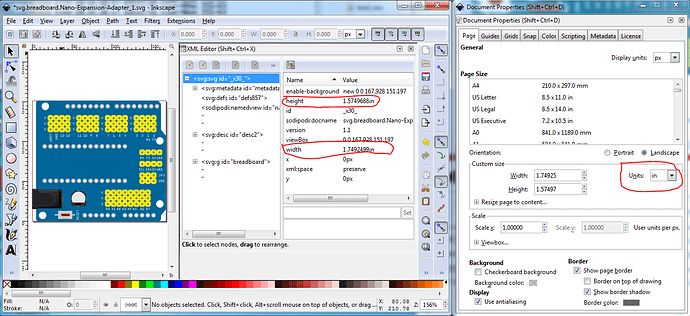This is likely why it would be a good bet to figure out (assuming it is possible, which I expect it is) to configure Illustrator to use in or mm as the drawing units. Your breadboard svg is dimensioned in px which is likely what is causing the scaling issue (this is from your original post’s breadboard svg):
Units (in Inkscape not Illustrator!) are px, which makes the document height and width in px. Converting that to inches in Inkscape doesn’t do anything about the scale (without a rescale) but does change the document sizes to use inches where the px the editor uses doesn’t matter because an inch is an inch.
I haven’t been able to find anything useful in a google search for “illustrator set document height and width” although I’m not sure that is what I really want to do here :-), this may help it indicates there is (sometimes) a height and width box on an artboard (note I don’t know what an artboard is ![]() ), and that might set the metadata for the svg in to in or mm if set that way.
), and that might set the metadata for the svg in to in or mm if set that way.
As well, I’m not sure why you suppressed schematic. There isn’t anything wrong with schematic, it works fine. What is needed is a different variant of the nano which has a schematic with all the pins on the right side (as I did with the uno in this post:
the reason I didn’t do this for the nano is there is a bug that currently makes this not work correctly. Once we get that bug fixed I intend on making shield friendly schematic options for all processor parts.
Peter

